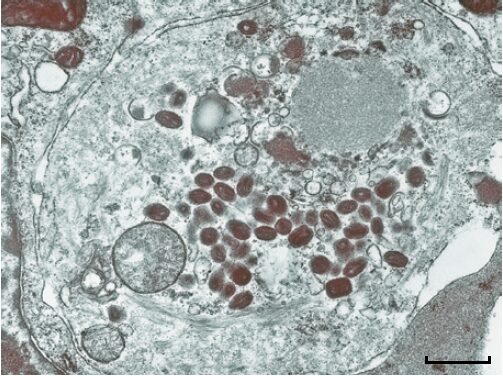Microbiology Disciplines
Introduction
- Microbiology Disciplines is the relationship between microbiology and its various disciplines.
- Today, many microbiologists are still searching for, finding, and trying to understand the roles of microorganisms in the environment as well as in health and disease.
- In fact, less than 2% of all microorganisms on Earth have been identified and many fewer cultured, so there is still a lot to be discovered and studied in the microbial world.
- As time went on, more and more microbes were identified and studied.
- Let’s briefly survey what we know about these major groups of microorganisms.
Bacteria and Archaea
- It is estimated that there might be more than 10 million bacterial species.
- Most are very small, single-celled (unicellular) organisms, although some form filaments, and the majority associate in a bacterial community called a “biofilm.”
- Almost all bacterial cells have a rigid cell wall and many common ones are spherical, spiral, or rod-shaped.

- They lack a cell nucleus and most of the typical membrane enclosed cellular compartments typical of other microbes and multicellular organisms.
- Many bacterial organisms get their food from the environment, although some make their own food through photosynthesis.

- Bacterial cells are found in most all environments, making up, as previously mentioned, a large percentage of the Earth’s microbial workforce.
- In addition to the disease-causing members, some are responsible for food spoilage, whereas others are
useful in the food industry. - Many bacterial members, along with several fungi, are decomposers, organisms that recycle nutrients from dead organisms.
- Based on recent biochemical and molecular studies, many bacterial organisms have been reassigned into another unique evolutionary group, called the Archaea.
- Although they look like bacterial cells when observed with the microscope, many of the first members to be identified grew in environments that are extremely hot (such as the Yellowstone hot springs), extremely salty (such as the Dead Sea), or of extremely low pH (such as acid mine drainage).
- These are called as extremophiles evolved many adaptations to survive in these extreme environments.
- Conversely, many other archaeal organisms normally grow in temperate soils and water and are an integral part of the microbiome in animal digestive tracts.
- No archaeal members are known to be pathogens, but like the bacterial microbes, they are an important part of Earth’s microbial workforce.
Viruses
- Although not correctly labeled as microorganisms, these “infectious agents” currently consist of more than 100 million known types. Probably, most every cell on Earth can be infected by some type of virus.
- Viruses are not cellular and cannot be grown in culture.
- They have a core of nucleic acid (DNA or RNA) surrounded by a protein coat.
- Among the features used to identify viruses are morphology (shape), genetic material (DNA, RNA), and biological properties (the organism, tissue, or cell type infected).

- Viruses infect organisms for one reason only: To replicate.
- Viruses in the air or water, for example, cannot replicate because they need the metabolic machinery and chemical building blocks found inside living cells.
- Of the known viruses, only a small percentage cause disease in humans.
- Examples: Polio, the flu, measles, AIDS, and smallpox.
- The other groups of microbes have a cell nucleus and a variety of internal, membrane-bound cellular compartments.
Fungi
- The fungi include the unicellular yeasts and the multicellular mushrooms and molds.
- About 100,000 species of fungi have been described; however, there might be as many as 1.5 million species in nature.
- Other than some yeasts, molds grow as filaments with rigid cell walls. Most grow best in warm, moist places and secrete digestive enzymes that break down nutrients into smaller bits that can be absorbed easily across the cell wall.

- Fungi, therefore, live in their own food supply. If that source of food is a human, diseases such as ringworm or vaginal yeast infections can result.
- For the pharmaceutical industry, some fungi are sources for useful products, such as antibiotics. Others molds are used in the food industry to impart distinctive flavors in foods such as cheeses.
- Together with many bacterial species, numerous molds play a major role as decomposers.
Protists
- The protists consist mostly of protozoa and single celled algae. Some are free living, whereas others live in association with plants or animals.
- Movement, if present, is achieved by flagella or cilia or by a crawling motion. Protists obtain nutrients in different ways.
- Some absorb nutrients from the surrounding environment or ingest smaller microorganisms. The unicellular, colonial, and filamentous algae have a rigid cell wall and can carry out photosynthesis.

- The aquatic protists also provide energy and organic compounds for the lower trophic levels of the food web.
- Some protists (the protozoa) are capable of causing diseases in animals, including humans; these include malaria, several types of diarrhea, and sleeping sickness.

Reference and Sources
- http://courses.lumenlearning.net/biology/chapter/chapter-13-diversity-of-microbes-fungi-and-protists/
- https://quizlet.com/153096822/microbiology-10th-edition-jeffrey-c-pommerville-ch-134-flash-cards/
- https://www.researchgate.net/publication/326274261_Methanogenesis
- https://en.m.wikipedia.org/wiki/Photosynthesis
- https://www.sciencedirect.com/topics/immunology-and-microbiology/acidophiles
Also Read:
- Types of microscopes
- Water as a Microbial Habitat
- Microscopy: Overview, Principles and Its Types
- Carbohydrate: Structure, Functions and Types
- Overview of lac operon an inducible operon
- Different types of Pathways for ATP Production
- Difference between Prokaryotes and Eukaryotes
- Microorganisms in Benthic Marine Environments
- Microorganisms in Freshwater Ecosystems
- Histoplasmosis: Symptoms, Pathogenesis, Treatment and prevention
- Amino acids: physical, chemical properties and peptide bond

3 thoughts on “Microbiology Disciplines: Bacteria, Viruses, Fungi, Archaea and Protists”
Fascinating!
Thank you so much for such clear and concise definitions.
Thank you Tim
This is a good book for images as well.